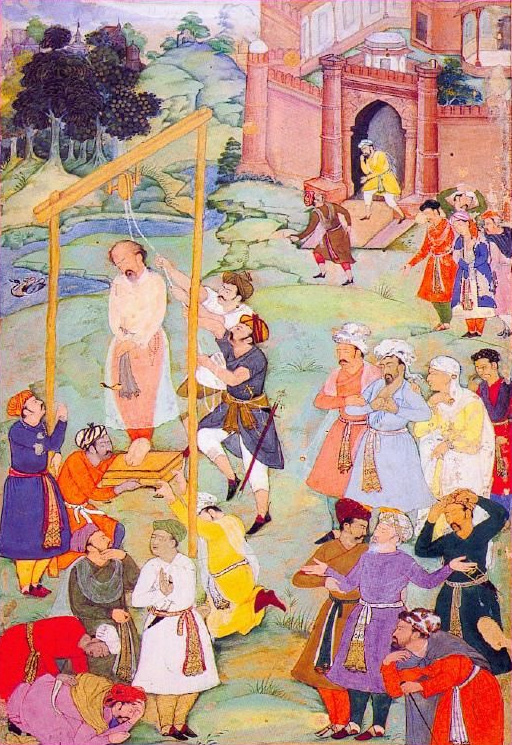FWP:
SETS == PARALLELISM
CURLS: {14,6}
TESTING: {4,4}
This second formal opening-verse to the ghazal is strikingly different from the first one, {204,1}. A commentator who really wanted to go the 'natural poetry' route could say that no doubt Ghalib had composed the ghazal with this one as its opening-verse, and at the last minute he tacked on the first opening-verse to flatter the King. But any such claim would have to be only speculation; there's simply no evidence on the question.
We learn in the first line that Majnun and Farhad have one kind of a test; we learn in the second line that the speaker has another kind. But are the two kinds of test to be equated? It's easy to do so, since the 'stature' and the 'scaffold', the 'curls' and the 'noose', have obvious strong affinities, and since both tests are in the present tense. Or are they to be markedly differentiated-- are they as different from each other as a scaffold and a tall beloved, as curly hair and a hangman's noose? As usual, it's left for us to decide.
And then further questions arise. If the two kinds of test are to be equated, how is this to be done? Is the beloved as deadly as a hangman, or is the hangman as welcome as the beloved herself? And if they are to be differentiated, then which is more deadly, or more desirable, and what kinds of 'tests' do they really pose for the lovers? As usual, we have to decide all this for ourselves.
Not surprisingly, this verse is often quoted in contexts of political activism.
Note for translation fans: The ubiquitous English clause introducer 'there is X' needs to be turned off here, so that we can say 'where Y is, there is X' and have the 'there' clearly refer to a place. Italics do the job, but they also impose an emphasis that is not present in the verse. Thus my awkward square-bracketed solution above.

Nazm:
That is, whatever mischief and disaster there is for Farhad and Majnun, it is the stature and curls of Laila and Shirin. But we are involved with a tyrant who draws us up on the scaffold. As a punishment for passion for her stature, and in return for madness for her curls, she has us hanged. (230)
== Nazm page 230